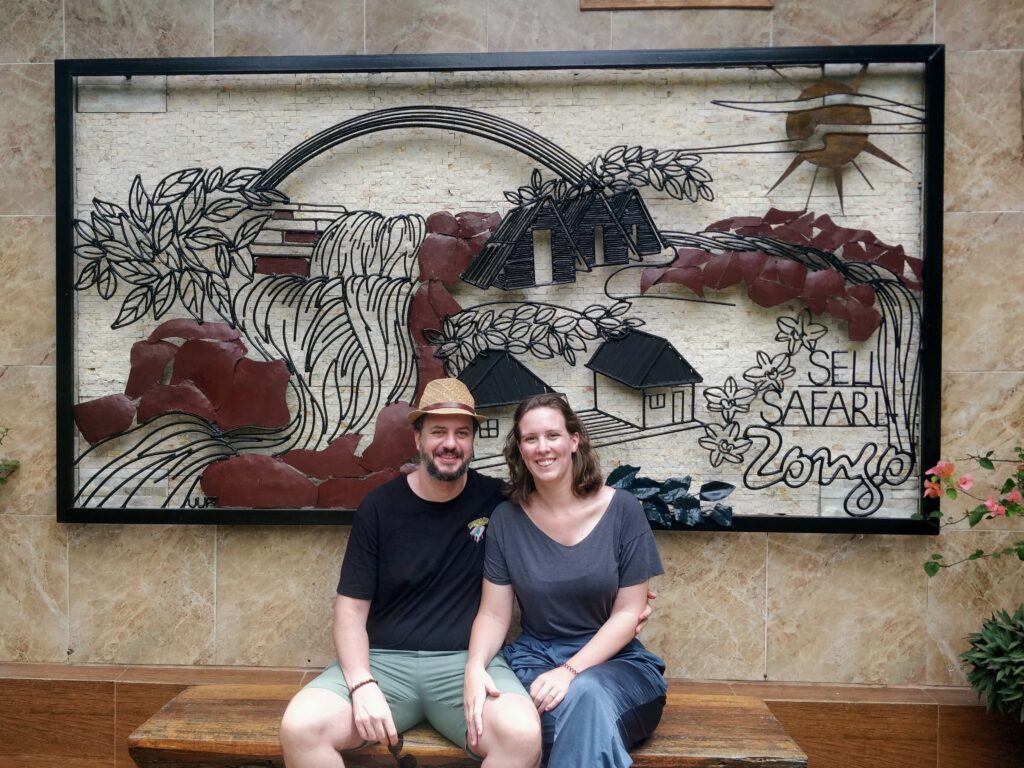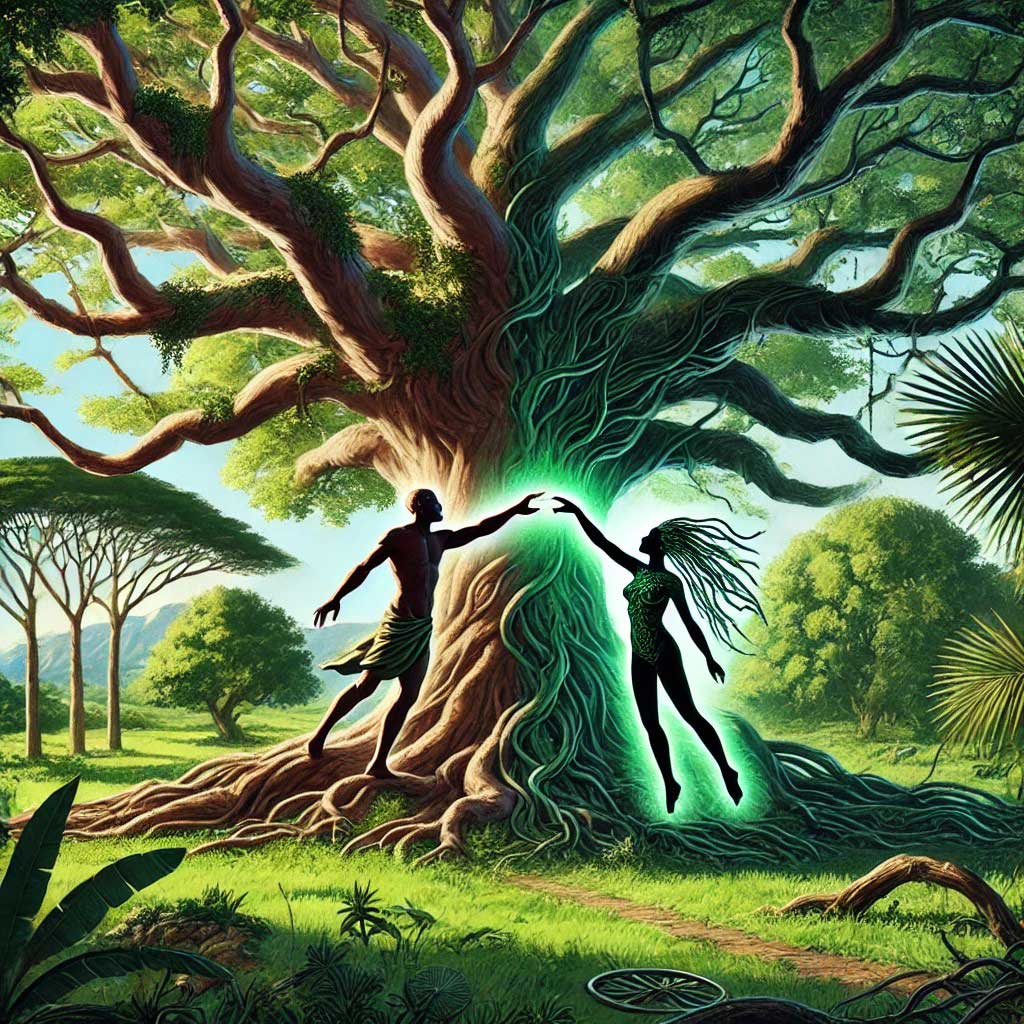Just a three-hour drive from Kinshasa lies Zongo, a place of breathtaking beauty and profound spiritual significance. Here, nestled in an idyllic landscape, are the Zongo waterfalls – part of an ancient paradisiacal garden where the ancient Kongo people believed that the supreme god Nzambi-a-Mpungu created the first human.
In Christianity and other Abrahamic religions, the Garden of Eden is the place where God created Adam and Eve, the first man and woman, and placed them in a paradise with the single commandment not to eat from the forbidden tree. In the ancient Kongo cosmogony, Nzambi-a-Mpungu created a paradisiacal garden in the Zongo region where he brought forth the first man, Mahungu.
Nzambi-a-Mpungu: The Supreme Creator
In contrast to the singular, solitary creator gods found in many Abrahamic religions, Nzambi-a-Mpungu, or short Nzambi, the supreme deity in Kongo mythology, is depicted as having a family. Nzambi is not only the omnipotent creator of the universe but also a figure with a wife, Nzambici, and several divine children. These children include Nzazi (Spirit of Thunder and Lightning), Ngonda (Spirit of the Moon and Menstruations), and Ntangu (Spirit of Time and the Sun), among others.
Nzambi created the universe and the natural world, and although he eventually withdrew from direct intervention, he left behind a divine family to govern various aspects of existence. His creation of the universe was not just a solitary act but part of a broader divine family structure, which plays a crucial role in maintaining the balance and order of the cosmos.
The Creation and Separation of Mahungu
Nkumba: The Sacred Dance of Reunification
After their separation, Maloango and Ndumba-Madiku felt an undeniable sense of loss. To restore the unity they once shared, they performed a sacred dance known as Nkumba. This dance was not just a physical act; it was a spiritual ritual meant to reunite their souls and bring them closer to the divine perfection they once embodied as Mahungu.
Nkumba became the foundation of marriage in Kongo culture, representing the sacred bond between two soulmates. This dance symbolized the effort to regain the lost unity and to reconnect with the divine balance ordained by Nzambi.
Zongo: A Sacred Pilgrimage
Exploring Zongo is more than just a visit to a picturesque landscape—it’s a journey into the spiritual heart of Kongo mythology. The Zongo Falls, the lush forests, and the serene beauty of the area are remnants of the ancient paradise garden where the first humans sought to restore their divine unity.
A few years ago, I visited Zongo with my future wife Verena. The experience was nothing short of magical—the stunning waterfalls, the lush greenery, and the serene atmosphere left us in awe. At the time, we didn’t know the profound story of Zongo and its connection to the Kongo creation myth. Yet, just a month later, we got married. Was it simply a coincidence, or was it something more? – Smile (Of course, we had planned to marry before visiting Zongo!)

Zongo serves as a powerful reminder of the Kongo’s rich cultural heritage. It is a place where the echoes of Nzambi-a-Mpungu’s creation story and the sacred dance of Nkumba still resonate. Visiting Zongo is not just about appreciating nature’s beauty; it’s about connecting with the spiritual roots of a civilization that has shaped the cultural landscape of the region. This journey is more than a mere visit—it’s a pilgrimage to a sacred site where the past and present converge, offering a unique insight into the profound spirituality of the Kongo people.
References
- Blaise Esinyalanga’s PhD draft, unpublished draft sent for review.
- Nzambi a Mpungu: Wikipedia. Nzambi a Mpungu – Wikipedia
- Kongo Mythology and Creation Story: Religion Documented. Nzambi a Mpungu



Comments